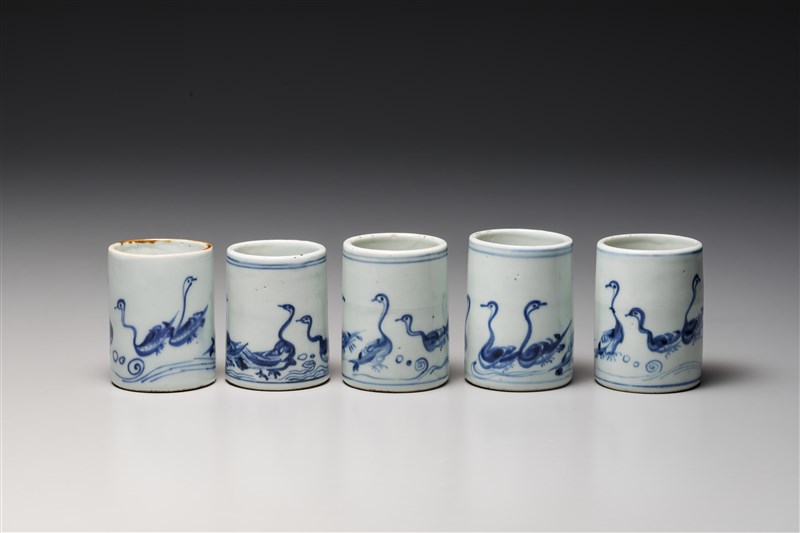古染付鵜文向付
- 中国・景徳鎮窯
- 中国・明時代
- 17c
- 染付磁製
- H-7.7 D-6
解説(春の玉手箱)
中国明代末期には日本の茶人の好みによる注文で、景徳鎮の民窯でさかんに染付が焼かれ輸出された。それらは古渡りの染付という意味で古染付の名称がつけられた。
この鵜文の湯呑は、元々は筒形の向付として作られたものを見立てたものだが、使い手の自由な眼が時所位に応じて用途を決める好例といえる。当時は大量に作られたのであろう、如何にも手慣れた筆さばきでいきいきとした鵜の群れが描かれている。白地に瑞々しい藍色の発色が映えて、手にする者の気持ちまで清められるようだ。
Catalogue Entry
During China's late Ming dynasty, there was a flourishing trade in so‐called sometsuke underglaze blue and white ware created at the Jingdezhen commercial kilns based on specific orders from Japanese tea ceremony masters. In Japan these wares are known today as “ko‐sometsuke," or literally “sometsuke wares which came to Japan in antiquity."
These cylindrical tea cups with cormorant images were originally made as small braziers used to hold a single coal for the lighting of tobacco pipes. They have also been used as cylindrical mukozuke dishes in the formal tea meal, with the person using them determining their use on each separate occasion. A large number of these cups would have been created at the time, and each is decorated with a group of cormorants drawn in a lively fashion by an experienced hand. The indigo of the underglaze blue is reflected off the white ground, and its pure glow would soothe the spirit of the person holding the cup.
